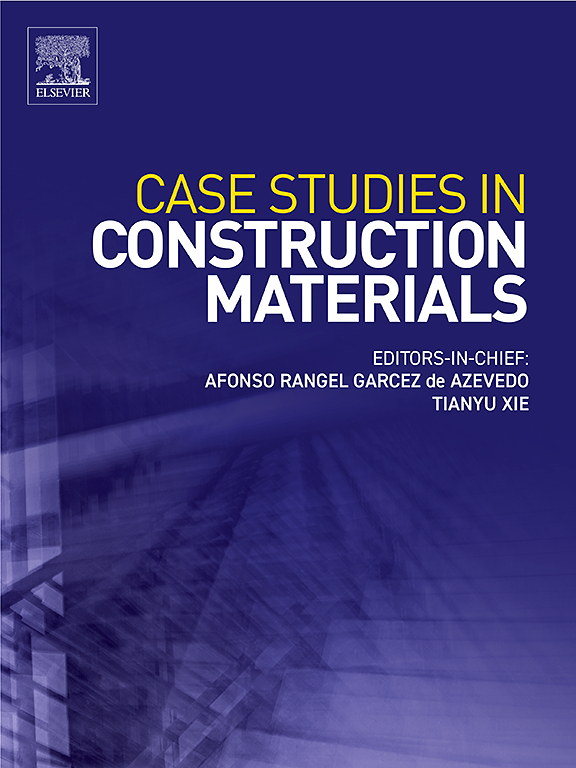Effects of material properties and environmental conditions on the adhesion performance and failure mode of CRMA
IF 6.6
2区 工程技术
Q1 CONSTRUCTION & BUILDING TECHNOLOGY
引用次数: 0
Abstract
The interfacial interaction between asphalt and aggregate plays a pivotal role in determining the water stability of asphalt mixtures. This study investigates the effects of intrinsic material properties and environmental conditions on the adhesion behavior of crumb rubber modified asphalt (CRMA), utilizing the pull-off strength tests and image recognition methodologies. Multivariate analysis of variance (ANOVA) was conducted using SPSS software to statistically evaluate the significance of the effects of different material properties and environmental conditions on the adhesion performance of CRMA.The findings reveal that the adhesion strength between CRMA and aggregates decreases gradually with an increase in crumb rubber content. The smaller the crumb rubber particle size, the greater the interfacial adhesion strength. Under immersion conditions, the smaller crumb rubber particles reduce pull-off strength loss and strengthen the moisture resistance of the aggregates and asphalt interface, while lower content of crumb rubber maintains better water stability. Limestone and basalt aggregates demonstrate superior adhesion and resilience to moisture-induced degradation relative to their granite counterparts. Additionally, the cohesive failure area at the asphalt-aggregate interface decreases, shifting towards adhesive failure after immersion process based on the in-depth analysis of failure mode at the interface, including quantification of adhesion and cohesion failure area ratios. Among the examined factors, environmental moisture conditions (dry vs. wet) exert the most significant influence on the adhesion performance of CRMA. This comprehensive investigation establishes a theoretical foundation for optimizing the adhesion performance between CRMA and aggregates, thereby significantly enhancing the durability of asphalt pavement.
材料性能和环境条件对CRMA粘接性能和失效模式的影响
沥青与集料之间的界面相互作用是决定沥青混合料水稳定性的关键因素。本研究利用拉脱强度测试和图像识别方法,研究了材料特性和环境条件对碎橡胶改性沥青(CRMA)粘附行为的影响。采用SPSS软件进行多变量方差分析(ANOVA),统计评价不同材料性能和环境条件对CRMA粘附性能影响的显著性。结果表明:随着胶粒含量的增加,CRMA与骨料的粘结强度逐渐降低;橡胶颗粒粒径越小,界面粘附强度越大。在浸水条件下,较小的橡胶屑颗粒减少了拉脱强度损失,增强了集料和沥青界面的抗湿性,而较低的橡胶屑含量保持了较好的水稳定性。与花岗岩相比,石灰岩和玄武岩骨料具有较强的附着力和抗湿性。通过对界面黏结破坏模式的深入分析,包括黏结破坏面积比的量化,发现沥青-骨料界面黏结破坏面积减小,浸入过程后转向黏结破坏。在研究的因素中,环境湿度条件(干燥与潮湿)对CRMA的粘附性能影响最为显著。该综合研究为优化CRMA与骨料的粘结性能,从而显著提高沥青路面耐久性奠定了理论基础。
本文章由计算机程序翻译,如有差异,请以英文原文为准。
求助全文
约1分钟内获得全文
求助全文
来源期刊

Case Studies in Construction Materials
Multiple-
CiteScore
7.60
自引率
19.40%
发文量
842
审稿时长
63 days
期刊介绍:
Case Studies in Construction Materials provides a forum for the rapid publication of short, structured Case Studies on construction materials. In addition, the journal also publishes related Short Communications, Full length research article and Comprehensive review papers (by invitation).
The journal will provide an essential compendium of case studies for practicing engineers, designers, researchers and other practitioners who are interested in all aspects construction materials. The journal will publish new and novel case studies, but will also provide a forum for the publication of high quality descriptions of classic construction material problems and solutions.
 求助内容:
求助内容: 应助结果提醒方式:
应助结果提醒方式:


